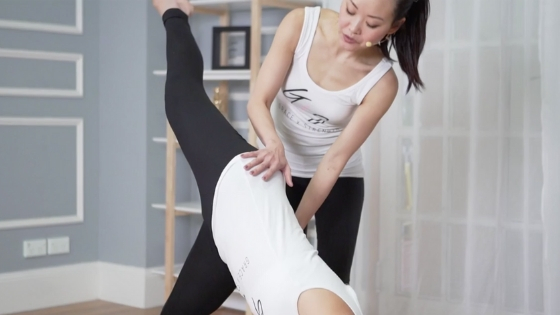
Yoga Basics & Alignment - SSRS
Here, we share some simple yoga tips on finding good postural alignment that can help you build a strong yoga practice. But not just that! Having awareness of good posture extends into the benefits of daily activities and a healthy body.
Date: 25th May 2018| Co-Authors: Alyssa & Josephineh
With the growing trend of advanced yoga poses posted online, it isn't surprising that many people find yoga quite intimidating. When we tell people that we are yoga instructors, a lot people think that we can do handstands, splits and contort into pretzel-like shapes. Yes, there are many instructors who have mastered those advanced poses and they continue to be an inspiration for many, but getting into advanced poses isn't the primary intention of a yoga practice.
This blog focuses on the movement component of yoga, or what is traditionally referred to as ‘asanas’. Aside from breath work and meditation, you don’t need to get into fancy-looking poses to see the benefits of yoga for your body. In fact, some may argue that the majority of the “fancy-looking" yoga poses online are not even traditional yoga poses but hey, a yoga practice and journey is very personal and we can respect that for everyone.
However….it is important to get the basics right.
One of the fundamentals that we encourage our students to start with is just simply being aware of their natural posture. In a standing position, this is Mountain pose. Our theory is that if you cannot stand with an awareness of good alignment , then don't even worry about getting upside down and folding in half.
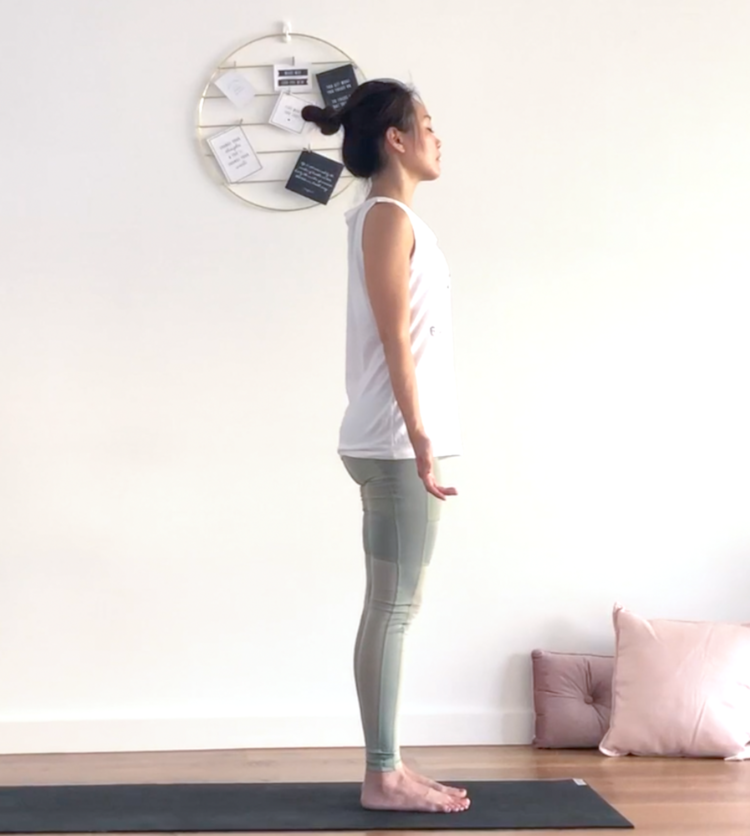
If you can get a good grasp of good postural alignment in Mountain Pose, you can apply it this awareness to a lot of other poses in your yoga practice. We like to use the acronym - SRSS (As taught by our Yoga School - Holy Yoga). Let’s explore this alignment cue further:
S - SOFTEN the back of your SACRUM
S - SHOULDERS rolled back and down away from ears
R - RIBS knitted in
S - SKULL drawn back (to bring ears over the shoulders, chin parallel to the ground)
If you have a chronic holding pattern that prevents you from achieving good alignment, a sudden awareness or change in your posture will feel very awkward or even uncomfortable, at first. This is just the way life is. When breaking out of poor habits, we just don’t like it - physically or mentally. Patience and grace are required to see through the gradual changes of forming new habits.
When practicing SSRS, you will notice a long flat spine leading from your sacrum all the way up your spine, along your neck to the crown of your head. Try it and let us know your feedback on it!
Now, let's take a look at other yoga poses and how we can apply the same alignment cues. Here we have the half way lift and chair pose. Do you see SSRS?
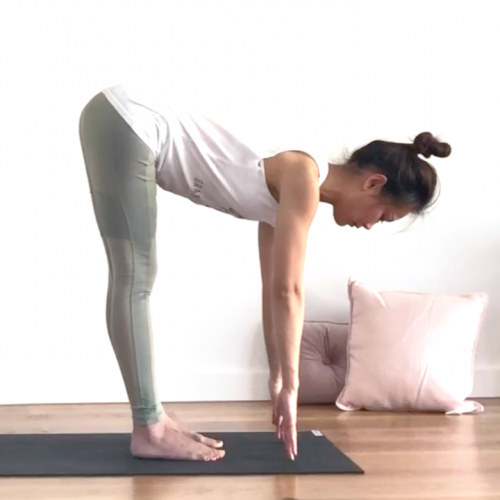
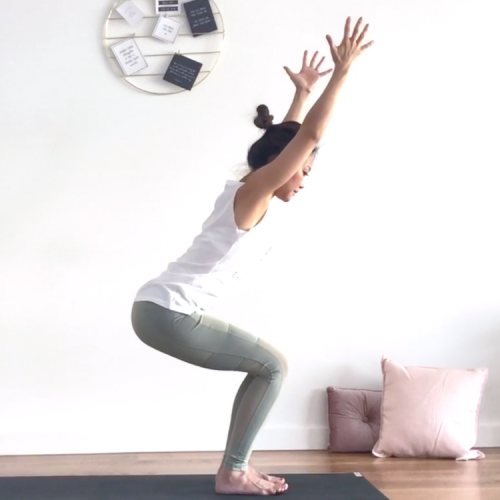
Plank pose is one that we often see students do incorrectly. Often the core is not activated and the chest is sinking towards the mat, putting a lot of weight in the wrists. That is the easy way out because the muscles aren’t activated and the pose is expressed through leveraging bones stacking on top of each other. Apply the SSRS cue and suddenly, we notice students self-correcting themselves and engaging the right muscles . One more tip is to press into the mat as if you are trying to push your chest away from the mat to fill up your shoulder blades. See below!
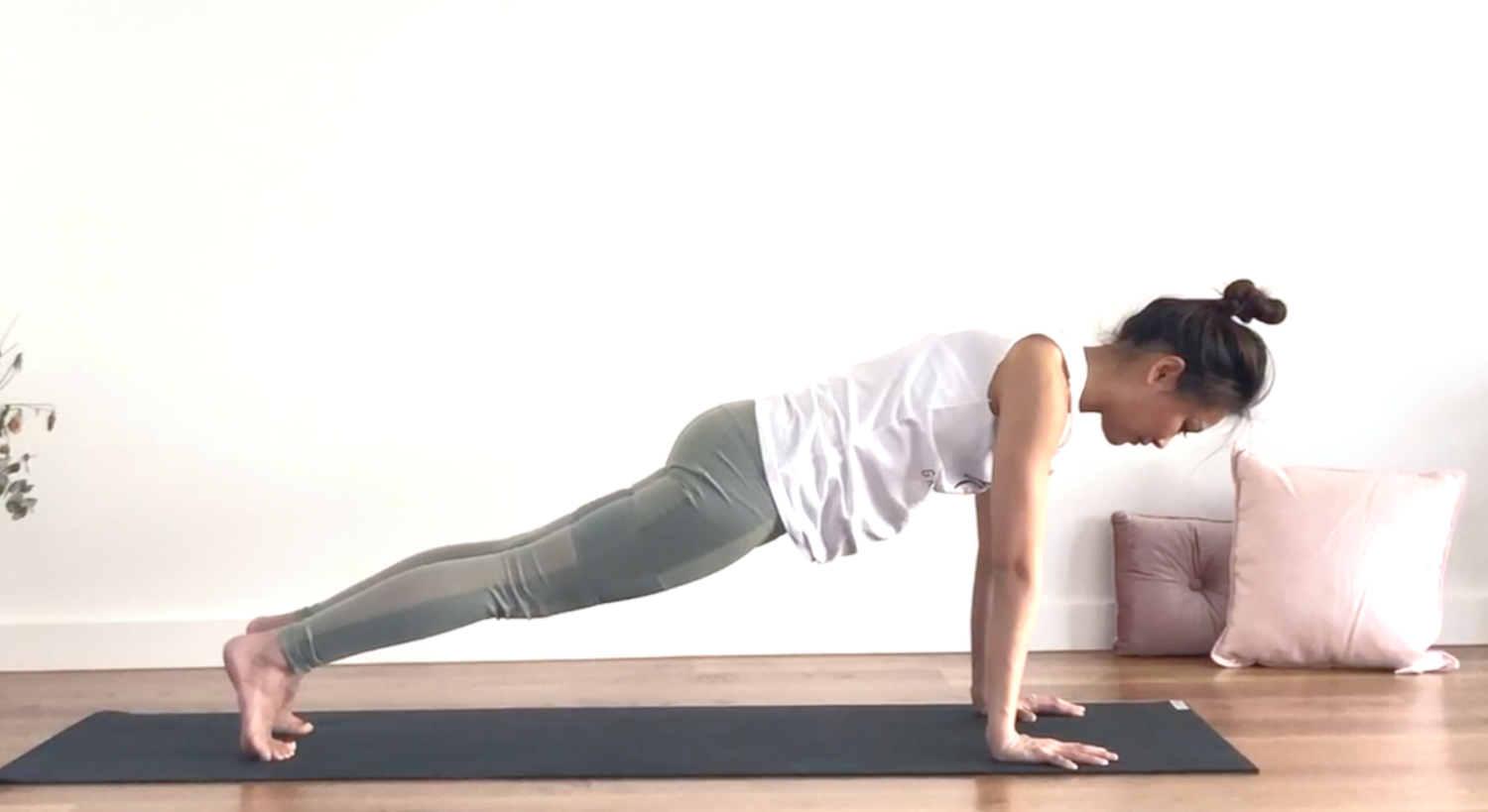
Remember that awareness of alignment fundamentals doesn’t just enhance your yoga practice. It helps you with your postural alignment, in turn, building strong foundations for every day activities in life! Learn to be aware, remember SSRS and take this lesson off the mat!
With Grace and Strength,
Alyssa & Jo

